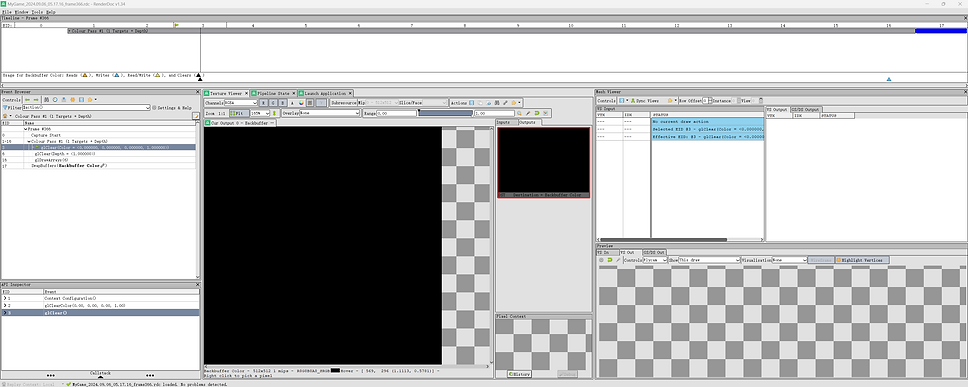Assignment 2
1. Show a screenshot of your game running.
2. Show screenshots from a Direct3D GPU capture in the Visual Studio Graphics Analyzer:
-
The first screenshot should show the render target when it is all black
(the ClearRenderTargetView() function should be highlighted)

-
The second screenshot should show the render target with the mesh
(the Draw() function should be highlighted)

3. Show screenshots from an OpenGL GPU capture in RenderDoc:
-
The first screenshot should show the render target when it is all black
(the glClear() function should be highlighted with Texture view)

-
The next screenshot should show the render target with the mesh
(the glDrawArrays() function should be highlighted with Texture view & Mesh output)

4. Show your code that binds the effect and draws the mesh in either Graphics.d3d.cpp or Graphics.gl.cpp
The codes are identical in both files.
First, declare two static variables, s_mesh and s_effect.

Then, initialize s_mesh and s_effect.

Next, bind effect and draw the mesh.

Finally, clean up s_mesh and s_effect.

4. Tell us (in general terms) what the remaining differences are between Graphics.d3d.cpp and Graphics.gl.cpp. Discuss any ways that you can think of to use platform-independent code to eliminate those differences so that only a single platform-independent Graphics.cpp file would be necessary.
The most significant difference is that for Direct3D, there is a "views" object that needs to initialize, render, and clean up.
The other minor difference is the codes for clearing the image buffer and depth buffer, as well as swaping the back buffer and front buffer.
For the minor difference, both platforms do the same thing, so it can be extracted into interfaces like "ClearingBuffer" and "SwapingBuffers" or so. Just like what we did for the mesh and effect, we can implement the interfaces in .d3d.cpp and .gl.cpp files.
For the significant difference of Direct3D views, we can extract it into a cView class, that only compiles for the Direct3D platform (cView.d3d.h and cView.d3d.cpp for example). Then, in the Graphics.cpp file, we use #if to surround the view codes. It should look like this:
